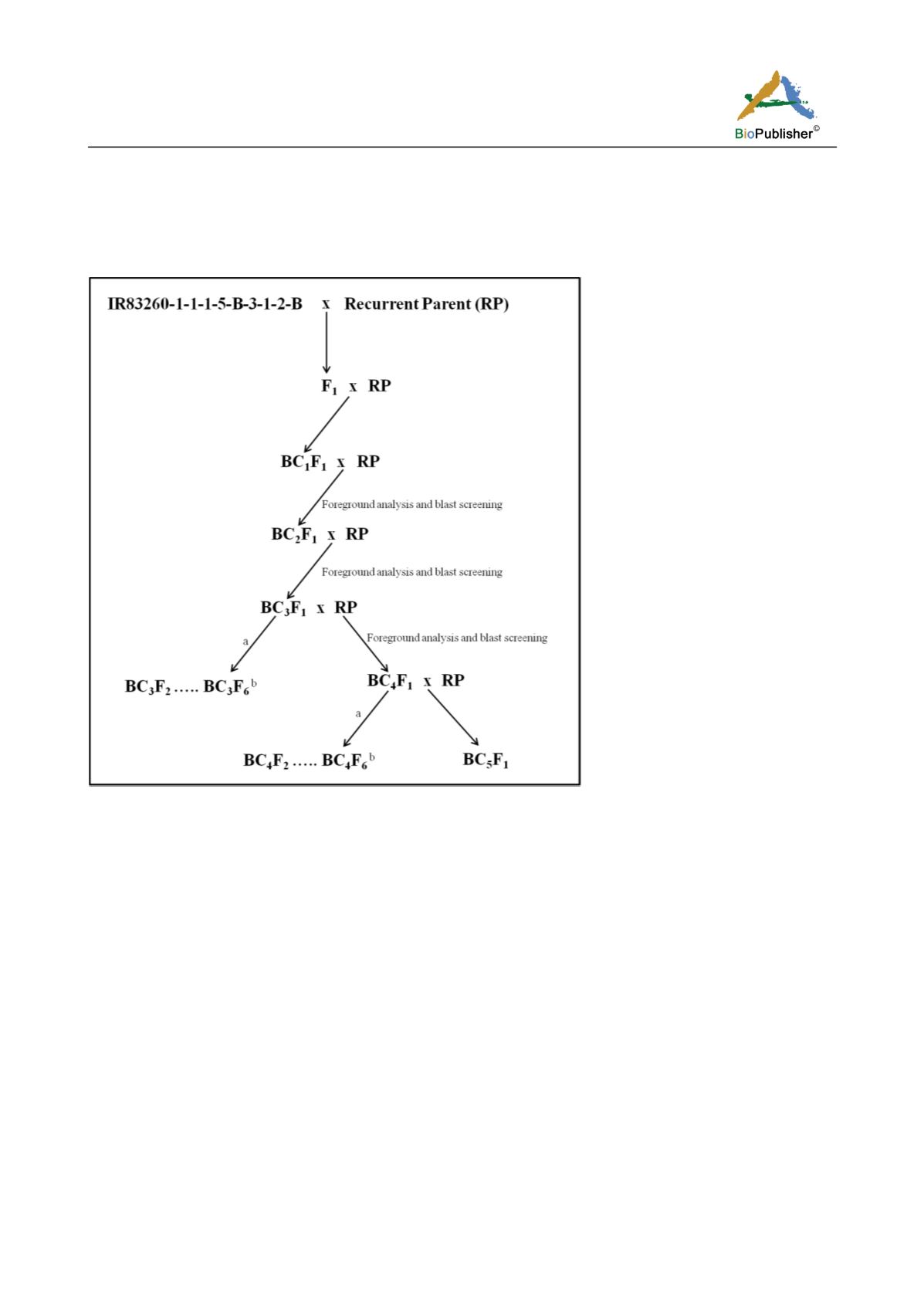
Molecular Plant Breeding 2016, Vol.7, No.33, 1
-
15
10
Prep, USA) at 900 rpm for 5 minutes. A modified cetyltrimethylammonium bromide (CTAB) method (Murray and
Thompson, 1980) was adapted for isolation of high-quality DNA. Concentration of DNA was quantified using the
Nano Drop ND-1000 (Thermo Scientific, USA). Sample preparation, DNA extraction and quantification were
performed at the Novel Gene Resources (NGR) Laboratory of PB, IRRI.
Figure 3
The development of F1 and production of early backcross generation progenies. RP= Recurrent Parent; BC=Backcross;
a=selfing, foreground analysis, and phenotype selection, b=SNP genotyping
4.2.2 Foreground Analysis
The DNAmarker 9871.T7E2b linked to the
Pi40
gene with the following primer sequences: forward (5’-CAACAA
ACG GGT CGACAAAGG-3’) and reverse (5’-CCC CCAGGT CGT GATACC TTC-3’), was used for foreground
analysis (Jeung et al., 2007). The
Pi40
gene-specific allele amplified 642 bp band. PCR profile is as follows: initial
denaturation at 95ºC for 5 minutes; 35 cycles of the following steps: denaturation at 95ºC
for 1 minute, primer
annealing at 65ºC for 1 minute, extension at 72ºC for 2 minutes; final extension at 72ºC
for 10 minutes and storage
at 4ºC. PCR cocktail includes 2 µl of 20 ng/µl template DNA, 0.3µl of 10 pmol forward and reverse primer, 2 µl of
10× PCR buffer and 1mM dNTPs respectively, 7.4 µl of PCR-grade water and 1µl
Taq
DNA polymerase.
Undigested PCR amplicons of 642 bp were first visualized using agarose gel electrophoresis and remaining PCR
products (10 µl) were used for restriction enzyme digestion using
MluC1
(New England Biolabs, USA) following
manufacturer’s protocol.
4.2.3 Application in high throughput genotyping
To demonstrate the application of the
Pi40
gene-specific marker in high throughput technologies, PCR amplicons of
the RPs, DP, and eleven ABLs were run and analyzed using Fragment Analyzer (Advanced Analytical Inc., USA).
Fragment analyzer is an automated capillary electrophoresis system that relies on fluorescence excitation and


